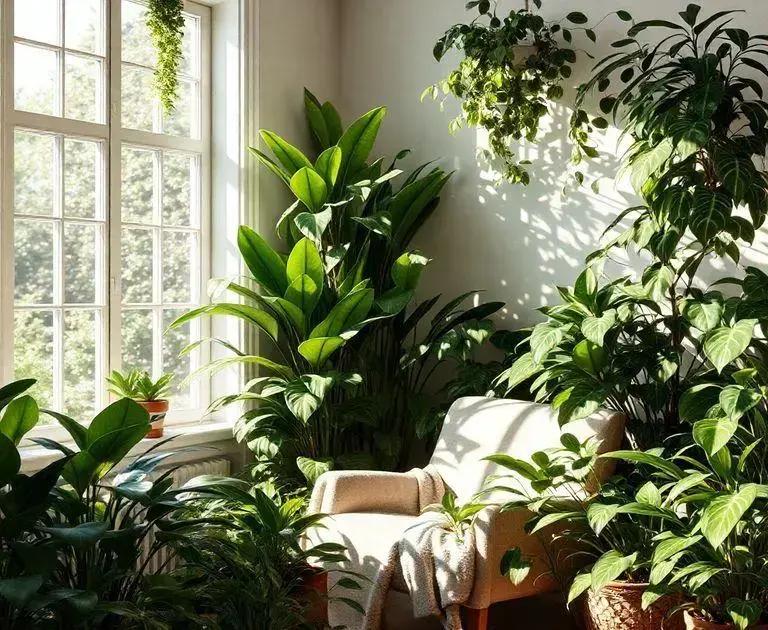How to Take Care of Plants During Winter: 7 Essential Tips for Success
How to take care of plants during winter can seem daunting, especially when the cold weather sets in. But fear not! By following a few essential guidelines, you can keep your houseplants thriving and your outdoor garden flourishing all winter long. With careful attention to light, temperature, and moisture levels, your plants will not only survive but thrive during this challenging season. Let’s explore the best practices for nurturing your green companions in colder months.
Table of Contents
ToggleEssential tips for protecting plants from frost
Essential tips for protecting plants from frost can make a significant difference in how well your green companions endure the chilly months. The cold can pose a serious threat to both indoor and outdoor plants, and knowing how to safeguard them is crucial for their longevity.
Understanding frost damage
Frost can kill or severely damage plants, especially tender species. It occurs when the temperature drops below freezing, causing ice crystals to form in plant tissues. Here’s what you need to know to prevent that:
- Identify your plant’s frost tolerance: Some plants are hardy, while others are delicate.
- Monitor weather forecasts: Be aware of nighttime temperatures, especially in early spring and late fall.
- Use frost dates for planning: Consult local gardening resources to determine frost-free dates in your area.
Protecting outdoor plants
For outdoor gardens, a few protective measures can keep your plants safe from freezing temperatures:
- Cover plants: Use row covers or blankets to provide insulation on cold nights.
- Mulching: Apply a thick layer of mulch around the base to help retain heat in the soil.
- Bring potted plants indoors: If possible, relocate potted plants to an insulated space.
Indoor plant strategies
Indoor plants also need care during winter. Here’s how to keep them thriving:
- Keep them away from cold drafts to prevent temperature shocks.
- Adjust lighting: Ensure they receive enough light as daylight hours decrease.
- Maintain humidity levels: Use humidifiers or pebble trays to keep moisture around them.
Regular maintenance is also essential. Here are some tips for exploring indoor gardening techniques that will keep your plants healthy.
Conclusion
Implementing these essential tips for protecting plants from frost will give your garden and indoor plants the best chance at thriving through the winter. Remember, prevention is key, and with a little effort, you can ensure your plants remain healthy all season long.
Indoors or outdoors: Where should your plants stay?

Indoors or outdoors: where should your plants stay? It’s a crucial question for plant enthusiasts during the winter months. Determining the right environment can significantly affect your plants’ health as they adapt to cold temperatures. Let’s explore the factors influencing this decision.
Evaluating your plant’s needs
Different plants have unique requirements regarding temperature, humidity, and light exposure. Before making a decision, consider the following:
- Temperature tolerance: Some plants thrive in warm indoor conditions, while others prefer cooler outdoor climates.
- Light requirements: Most houseplants need bright indirect light; outdoor placements may provide more intense sunlight.
- Humidity levels: Indoor environments are often drier in winter, which can stress moisture-loving plants.
Pros and cons of keeping plants indoors
Keeping plants indoors can offer several benefits:
- Protection from frost: Indoor spaces shield delicate plants from freezing temperatures.
- Controlled climate: You can manage light, heat, and humidity easily.
- Accessibility: Indoor plants are closer for observation and care.
However, there are some downsides to consider:
- Reduced growth: Some plants may become leggy due to insufficient light indoors.
- Low humidity: Heating systems can dry the air, affecting tropical plants.
Advantages of outdoor placements
For many gardeners, the outdoors offers an exciting opportunity for plants to thrive:
- Natural light: Outdoor plants receive full-spectrum sunlight, promoting healthy growth.
- Fresh air circulation: Ventilation helps prevent pests and fungal issues.
Nonetheless, the cold can be harsh:
- Risk of frost damage: Many outdoor species are susceptible to frostbite.
- Temperature fluctuations: Sudden drops at night can shock sensitive plants.
Finding a balance is vital. For more insights on exploring indoor gardening techniques, keep researching and adjusting your care regimen.
Conclusion
Your choice between indoors or outdoors ultimately depends on the specific needs of your plants and your local climate. Take time to assess their situation, and you’ll nurture vibrant plants throughout winter.
Optimal watering techniques during the winter months
Optimal watering techniques during the winter months are crucial for maintaining healthy plants. During this season, your watering routine might need to change significantly to accommodate the cold environment. Proper methods ensure that your plants get the moisture they need without the risk of root rot or frost damage.
Understanding winter watering needs
When winter arrives, plant requirements shift. Here’s what to keep in mind:
- Temperature influences: As temperatures drop, evaporation rates decrease, impacting moisture levels in the soil.
- Plant dormancy: Many plants enter a dormant phase, requiring less water compared to their growing season.
- Indoor vs. outdoor needs: Indoor plants may need more frequent watering than outdoor plants, as indoor air can be drier.
Techniques for effective watering
Implementing the following techniques can help ensure proper hydration during winter:
- Check soil moisture: Use your finger to feel the soil one inch down. If it feels dry, it’s time to water.
- Watering schedule: Establish a routine based on your plants’ specific needs while allowing the topsoil to dry out between waterings.
- Use lukewarm water: Cold water can shock your plants; lukewarm water is more beneficial during winter.
Additional considerations for winter watering
Other tips for successful watering include:
- Humidity levels: Increase humidity around indoor plants using pebble trays or humidifiers, especially during heating season.
- Container drainage: Ensure pots have adequate drainage holes to prevent root rot, especially in colder temperatures.
For more detailed insight on exploring indoor gardening techniques and making your winter plant care routine effective, consider these strategies.
Conclusion
Applying optimal watering techniques during the winter months will ensure your plants remain healthy and vibrant. Adjusting your watering habit to suit the winter conditions can make all the difference in your gardening success.
In conclusion
Taking care of plants during winter requires a thoughtful approach, whether you choose to keep them indoors or outdoors. Understanding optimal watering techniques is vital for their health and survival in colder months. By assessing your plants’ unique needs, you can create suitable environments that support growth and vitality.
Additionally, don’t hesitate to seek out more tips on enhancing your indoor garden. With the right knowledge and care, your plants can thrive and bring life to your space, even in the depths of winter.

